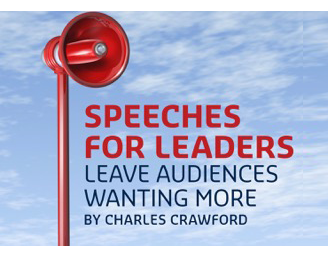One of the great clichés of public speaking and presenting: tell a story!
That’s a good idea. Only you know the story. You don’t need to write it down. You just talk!
But how exactly to express the story on the day?
First. Strip the story down to the absolute basics.
Because you know the story inside out, you might find yourself giving irrelevant details and wasting time. So work out in advance how to tell the story in its absolute simplest form. Can you say it in just 50 words? In 20 words? In ten words?
Those few words are the essence of what’s going on in that story. They lead you and the audience naturally into what the story means and why it matters.
Plus, once you have the absolute basics of the story and cut out useless detail, you’ve given yourself time to slow down and add meaning/emphasis to almost every word.
Less is more. Watch just the first minute or so of this superb example. Hardly a word can be removed. She gets so much power from the deliberate pace and pauses:
Second. Try using the present tense rather than the past tense.
You need not go full-on Damon Runyon and put the whole speech in the present tense (although maybe there is a brisk living out there for someone who ALWAYS puts ALL speeches/presentations in the present tense). But look how Runyon achieves (ie achieved) his famous stylistic effect:
It is generally pretty quiet on Broadway along about four bells in the morning, because at such an hour the citizens are mostly in speakeasies and night clubs, and on this morning I am talking about it is very quiet, indeed, except for a guy by the name of Marvin Clay hollering at a young doll because she will not get into a taxicab with him to go to his apartment. But of course Regret and I do not pay much attention to such a scene, except that Regret remarks that the young doll seems to have more sense than you will expect to see in a doll loose on Broadway at four bells in the morning, because it is well known to one and all that any doll who goes to Marvin Clay’s apartment, either has no brains whatever, or wishes to go there.
Compare and contrast:
Let me tell you what happened to me yesterday
I walked into a shop to buy bread
Everything’s fine. Nice bread!
Then I saw two mice, running out from behind the counter and along the wall
A lady behind me saw them too
There was a looooong pause
Then came the loudest scream I’ve ever heard in my life
You won’t believe what happened next …
Now this:
So. I walk into the shop. To buy the bread
Everything’s fine. Nice bread.
I see them!
Two mice. Running out from behind the counter. Along the wall
That lady behind me – she sees them too
Looooong pause
Then she screams
The LOOOOUUUUDEST scream I ever hear in my life
What happens next?
You won’t believe it …
This creates a quite different effect. It adds urgency, surprise – woh, this is happening right now.
Note too the small but real difference between the use of definite and indefinite articles:
I walked into a shop to buy bread
So. I walk into the shop. To buy the bread
By using the definite article (the shop, the bread) a subtly different sense of immediacy is created. It’s as if the audience are plunged straight into the action mid-stream.
These little touches make a huge difference to the tone and energy of your speeches and presentations. They make it different.
Trust me on this.











I agree. This is one of the greatest story tellers speech makers I have ever heard: https://youtu.be/r5rIvW39_Ko
Merry Christmas Charles!
Love being reminded of Damon Runyon.